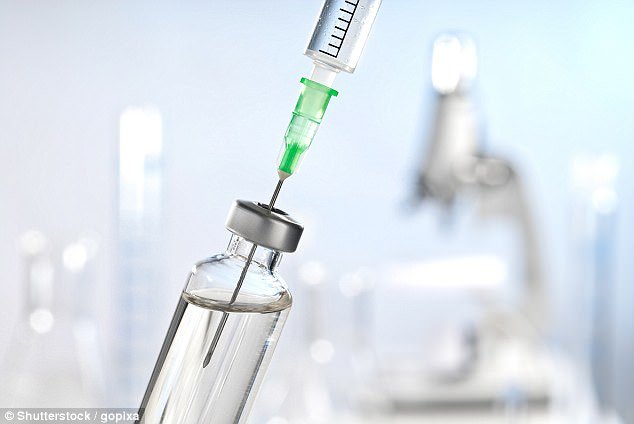
Aluminium in vaccines may cause autism, controversial new research suggests.
Autistic children have up to 10 times more of the metal in their brains than what is considered safe in adults, a study found.
Aluminium crosses the membrane that separates the brain from circulating blood and accumulates in cells involved in maintaining a constant internal environment, such as temperature, the research adds.
Study author Professor Chris Exley from Keele University, said: 'Perhaps we now have the link between vaccination and autism spectrum disorder (ASD), the link being the inclusion of an aluminium adjuvant in the vaccine.'
The researchers speculate autism sufferers may have genetic changes that cause them to accumulate aluminium which healthy people are able to remove.
The findings are controversial after the disgraced gastroenterologist Andrew Wakefield said in 1995 that the measles, mumps and rubella (MMR) vaccine is linked to bowel disease and autism.
Mr Wakefield's view has since been widely discredited, however, the World Health Organization claims people's fear of vaccines means many, particularly young children, are unprotected against measles.
In a piece for The Hippocratic Post, Professor Exley discusses how aluminium accumulates in the brains of autism sufferers and if vaccines may be to blame.
Research at Keele University, published in the Journal of Trace Elements in Medicine and Biology, provides the strongest indication yet that aluminium is a cause of ASD.
The aluminium content of brain tissues from five donors who died with a diagnosis of ASD was found to be extraordinarily high; some of the highest values yet measured in human brain tissue.
Why for example, would one of the four major brain lobes of a 15-year-old boy with autism be 8.74 (11.59) micrograms/g dry weight - a value which is at least 10 times higher than might be considered as acceptable for an adult never mind a child?
Yet, while the aluminium content of each of the five brains was shockingly high it was the location of the aluminium in the brain tissue which served as the standout observation.
The majority of aluminium was identified in non-neuronal cells, which are involved in maintaining a constant internal environment.
Aluminium was also found in inflammatory cells in the brain, alongside clear evidence of inflammatory cells heavily loaded with aluminium entering the brain via the surrounding membranes and those that separate the brain from circulating blood.
The fact that the majority of aluminium found in brain tissues in ASD was within cells and associated with tissues that maintain the body's internal environment is, at least for now, unique to ASD and may begin to explain why young adolescents had so much aluminium in their brains.
Autism sufferers may be less able to remove built-up aluminium
Perhaps there is something within the genetic make-up of specific individuals which predisposes them to accumulate and retain aluminium in their brain, as is similarly suggested for individuals with genetically passed-on Alzheimer’s disease.
The new evidence strongly suggests aluminium is entering the brain in ASD via inflammatory cells which have become loaded up with aluminium in the blood and/or lymph, much as has been for certain immune cells at injection sites for vaccines that contain aluminium to increase the body's immune response.
Hi! I am a robot. I just upvoted you! I found similar content that readers might be interested in:
http://yournewswire.com/2017-study-vaccines-autism/